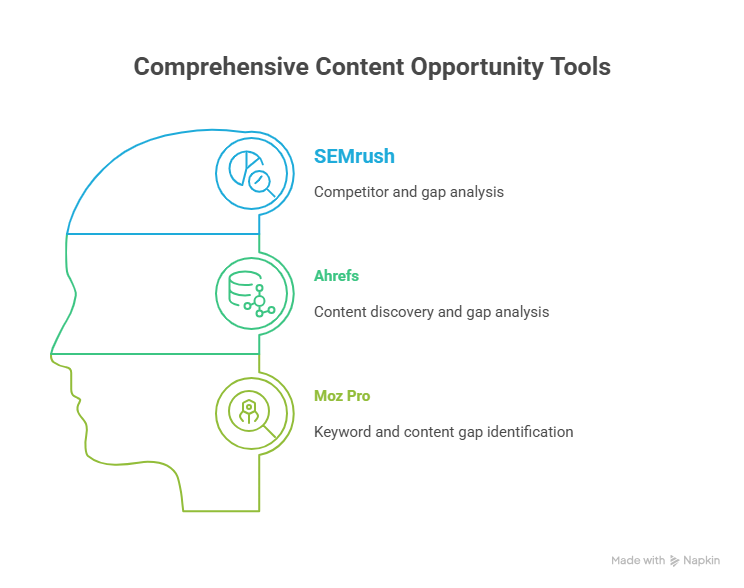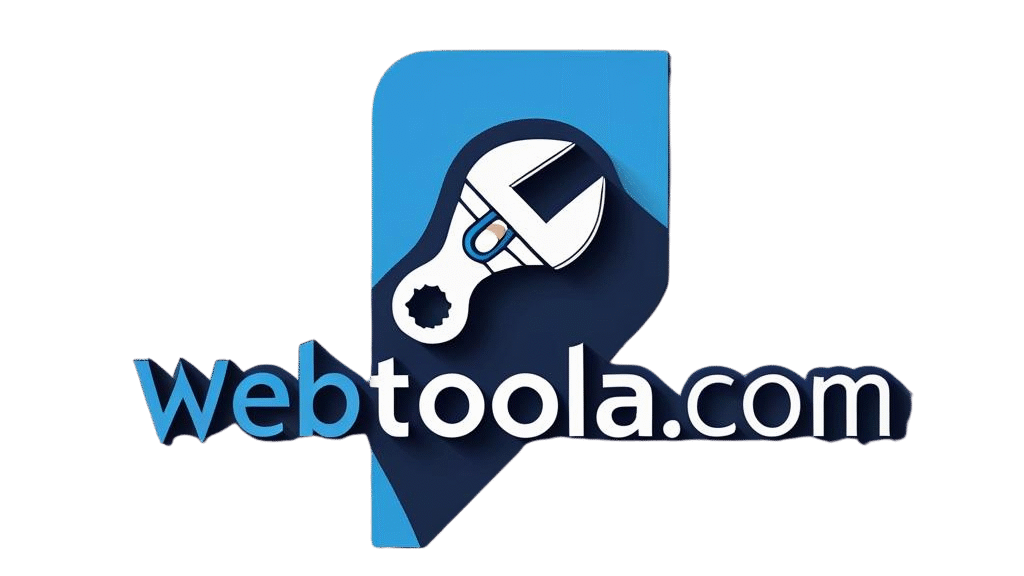Did you know that businesses that strategically refine their online presence see a significant boost in website traffic? In today’s competitive digital landscape, understanding what’s missing from your online strategy is crucial.
By leveraging online marketing tools you can uncover areas for improvement and outperform your competitors. This article will guide you through the process of identifying these gaps using various content gap analysis tools helping you enhance your SEO efforts and drive more traffic to your site.
With a clear understanding of these tools, you’ll be able to refine your strategy and improve your online visibility. Our goal is to break down complex concepts into actionable steps, making it easier for you to succeed in the ever-evolving digital world.

Understanding Content Gaps and Their Impact on SEO
Identifying content gaps is the first step towards improving your content strategy. Content gaps refer to the missing topics or keywords in your content that your competitors are covering. Analyzing these gaps can significantly enhance your SEO efforts by revealing opportunities to create content that attracts more traffic and engages your audience more effectively.
What Are Content Gaps?
Content gaps are the topics or keywords that your content is missing, which are being covered by your competitors. These gaps can be identified through a thorough analysis of your content and that of your competitors. By understanding what content gaps are, you can start creating a more comprehensive content strategy.
Why Content Gap Analysis Matters for Your Strategy
Content gap analysis is crucial because it helps you identify areas where your content is lacking. By addressing these gaps, you can improve your SEO rankings and drive more traffic to your site. It’s an essential step in creating a robust content strategy that meets the needs of your audience.
Signs Your Content Strategy Has Gaps
If you’re noticing a decline in website traffic or engagement, it might be a sign that your content strategy has gaps. Other signs include high bounce rates and low conversion rates. By identifying and addressing these gaps using seo tools and content strategy tools, you can improve your overall content performance.
Top Content Gap Analysis Tools for Competitive Advantage
In the quest for a competitive edge, understanding and utilizing top-notch content gap analysis, tools is vital. These tools help businesses identify gaps in their content strategy, uncover new opportunities, and outperform their competitors.
SEMrush Gap Analysis Features
SEMrush is a powerful tool that offers comprehensive gap analysis features. It enables users to compare their content with that of their competitors, identifying areas where they can improve.
Key Features and Benefits
Competitor Analysis: SEMrush allows users to analyze competitors’ content, identifying gaps and opportunities. This feature is crucial for developing a robust content strategy.
How to Use SEMrush for Content Gap Analysis
To use SEMrush for content gap analysis, start by entering your domain and your competitors’ domains. SEMrush will then provide a detailed report highlighting the gaps and opportunities.
Ahrefs Content Explorer and Gap Analysis
Ahrefs is another leading tool that offers a Content Explorer feature, enabling users to identify content gaps and opportunities. It provides insights into what content is performing well and what is not.
Key Features and Benefits
- Content Discovery: Ahrefs helps users discover new content opportunities based on trending topics and competitor analysis.
- Gap Analysis: The tool identifies gaps in the content, allowing users to refine their strategy.
How to Use Ahrefs for Content Gap Analysis
To utilize Ahrefs for content gap analysis, use the Content Explorer to analyze your content and that of your competitors. Identify gaps and opportunities, and refine your content strategy accordingly.
Moz Pro for Content Opportunity Discovery
Moz Pro is a comprehensive tool that offers features for content opportunity discovery. It helps users identify relevant keywords and content gaps.
| Tool | Key Features | Benefits |
|---|---|---|
| SEMrush | Competitor analysis, gap analysis | Identifies content gaps, opportunities |
| Ahrefs | Content discovery, gap analysis | Discovers new content opportunities |
| Moz Pro | Content opportunity discovery | Identifies relevant keywords, content gaps |

Google Search Console and Analytics for Gap Identification
Google Search Console and Analytics are essential tools for identifying content gaps. They provide insights into how users interact with your content, highlighting areas for improvement.
BuzzSumo for Content Performance Analysis
BuzzSumo is a tool that analyzes content performance, helping users understand what content resonates with their audience. It identifies top-performing content and provides insights into content gaps.
Implementing Your Content Gap Analysis Findings
After conducting a thorough content gap analysis using SEMrush, Ahrefs, or other search engine optimization tools, the next step is to turn your findings into actionable steps. This involves creating a plan to address the identified gaps, whether by developing new content, optimizing existing content, or adjusting your overall content strategy.
To effectively implement your findings, start by prioritizing the gaps based on their potential impact on your SEO efforts. Focus on creating high-quality, relevant content that resonates with your target audience. Utilize the insights gained from your analysis to inform your content creation process, ensuring that you’re producing material that meets the needs of your users.
By leveraging search engine optimization tools, and implementing your content gap analysis findings, you’ll be able to enhance your SEO efforts, drive more traffic to your site, and improve your online presence. This data-driven approach will help you stay competitive in the ever-evolving digital landscape.
FAQ
What is a content gap analysis, and why is it important for my SEO strategy?
A content gap analysis is the process of identifying gaps in your content strategy by comparing your content to that of your competitors. It’s essential for SEO as it helps you uncover opportunities to create content that attracts more traffic and engages your audience more effectively.
How do I choose the right content gap analysis tool for my needs?
When selecting a content gap analysis tool, consider factors such as the tool’s features, ease of use, and pricing. Popular options include SEMrush, Ahrefs, Moz Pro, Google Search Console and Analytics, and BuzzSumo. Each tool offers unique benefits, so it’s crucial to evaluate them based on your specific needs and goals.
Can I use multiple content gap analysis tools together?
Yes, using multiple tools can provide a more comprehensive understanding of your content gaps. By combining the insights from different tools, you can gain a more detailed picture of your content strategy’s strengths and weaknesses.
How often should I conduct a content gap analysis?
The frequency of conducting a content gap analysis depends on your content strategy’s complexity and the rate at which your industry evolves. As a general rule, it’s a good idea to perform a content gap analysis at least quarterly to stay on top of changes in your niche and adjust your strategy accordingly.
What are some common signs that my content strategy has gaps?
Common signs of gaps in your content strategy include low engagement rates, poor search engine rankings, and a lack of relevance to your target audience’s needs. If you notice that your competitors are outperforming you in these areas, it may be time to conduct a content gap analysis.
How do I implement the findings from my content gap analysis?
To implement your findings, create a plan to address the identified gaps by developing new content, optimizing existing content, or adjusting your overall content strategy. This may involve creating a content calendar, allocating resources, and setting clear goals for your content efforts.

